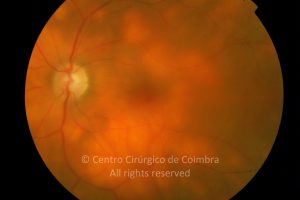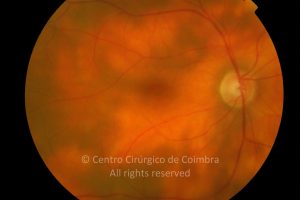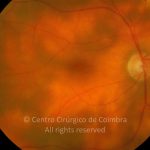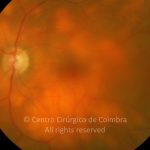Acute posterior multifocal placoid pigment epitheliopathy (APMPPE) is an inflammatory disorder affecting the retina, retinal pigment epithelium (RPE), and choroid It is more likely to affect healthy patients of 20-40-years of age after a systemic infection.
The exact pathological origin of APMPPE remains unknown, but is believed to be a hypersensitivity-induced vasculitis and represents a primary obstruction of the choroidal circulation with secondary RPE degeneration
General symptoms include metamorphopsia, photopsia, scotomas, and blurred vision.
Fundus examination reveals multiple yellow-white placoid subretinal lesions of the posterior pole, usually bilateral and asymmetric. Fluorescein angiogram shows typically early-stage hypofluorescent placoid areas and late-stage hyperfluorescent lesions.
It resolves in weeks to months but leaves scattered areas of RPE atrophy and hyperplasia.
Differential Diagnosis:
- Multifocal Choroiditis
- Sarcoidosis
- Vogt-Koyanagi-Harada disease
- White Dot Syndromes









